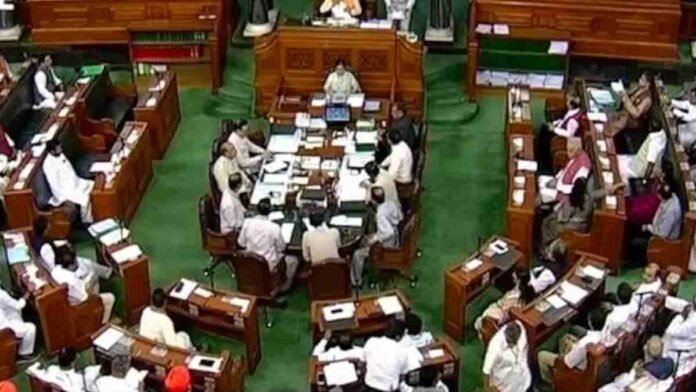With the inauguration of the new Parliament Chamber, capable of accommodating 1000 members, speculation arises regarding the government’s intentions to expand the Lok Sabha.
It is to be noted that the present allocation is 543 seats, comprising 530 for states and the remaining for Union Territories, which aligns with Article 81 of the Constitution. Additionally, the President of India has the authority to nominate two members from the Anglo-Indian community.
Is it legal?
What does Our Constitution say about Expansion?
Article 81’s Clause 2 emphasizes equal representation of states in the Lok Sabha, wherein seat allocation is determined by population. The aim is to maintain a consistent ratio between seats and population as much as possible. Smaller states with populations below six million are guaranteed at least one seat, irrespective of their population-seat ratio.
To facilitate the periodic adjustment of Lok Sabha seats, Article 82 enables the reallocation of seats to states and state legislative assemblies after each census through a process known as Delimitation. However, the 42nd and 84th Constitutional amendments effectively froze the readjustment until 2026, considering national population policies and family planning programs.
What is Delimitation?
Delimitation of Lok Sabha is essential to ensure fair and proportional representation in the lower house of the Indian Parliament. It helps in readjusting the allocation of parliamentary seats based on population changes observed during each census, ensuring that every citizen’s vote carries equal weight. By keeping the representation in line with population dynamics, delimitation promotes democratic principles and upholds the constitutional mandate of equal representation for all states and territories in the Lok Sabha.
Historical Evidence
A previous delimitation exercise conducted from July 2002 to May 2008 based on the 2001 census led to adjustments in many parliamentary and assembly constituencies. However, Lok Sabha seats remained unchanged due to the freeze imposed in 2001.
Factually, various constitutional amendments altered the number of Lok Sabha seats. The original Article 81 stipulated 500 members, while the first House in 1952 consisted of 497 members. The amendment raised the representation ratio to at least one member per 750,000 people, with a maximum of one member per 500,000. The figures were subsequently revised through the second Constitutional amendment to 850,000.
High time to Reorder
Experts argue that relying on a six-decade-old census for seat allocation by 2031 would lead to over and under-representation of states. Using the 2011 census as a basis, it is suggested that Rajasthan, Bihar, Uttar Pradesh, and Madhya Pradesh should gain 22 additional seats, while Tamil Nadu, Telangana, Kerala, and Andhra Pradesh collectively should have 17 seats fewer.
In December 2019, former President Pranab Mukherjee also advocated for an increase in parliamentary seats, addressing the disproportionate ratio between the electorate and elected representatives.
Benefits of Delimitation
- Ensuring fair representation
- Reflecting population changes
- Reducing malapportionment
- Enhancing political inclusivity
- Enabling effective governance
Expanding the Lok Sabha’s strength would prove beneficial for the country in the long run, ensuring equitable representation and meeting the evolving demographic realities



